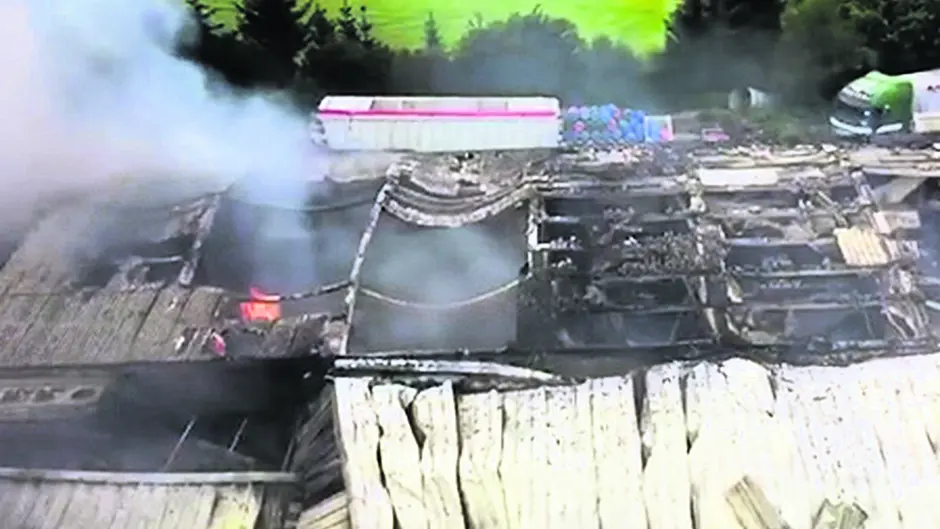Fires reignited at the Ilen Seafoods factory in Baltimore the day after the initial blaze took place.
FIRES reignited at the Ilen Seafoods factory in Baltimore the day after the initial blaze took place.
From 10am last Wednesday until almost 11pm that night, the entire focus of the six West Cork crews, and the four back-up crews, was on controlling and then quenching the fire at the processing plant.
The core teams – including two crews from Skibbereen, under station officer Des Quinn, the two from Bantry under station officer Ian Vickery, and the two from Schull under station officer Paul O’Brien – worked on a rotation basis for most of the day, but it was not until 8pm that some of them felt able to take a quick meal break in Baltimore where they got a round of applause from diners on the square.
Des Quinn, who was the officer in charge on the day, confirmed that from around 1pm onwards they got county-wide support in the form of one water tanker from Midleton and another from Mallow, as well as a hydraulic platform from Midleton, and an incident command unit from Ballincollig. The assistant chief fire officer, David Hickey, was also in attendance.
Des confirmed that through their combined efforts they had the fire under control by 5pm but had to give another six to seven hours cooling it down. Even then, he said, they had to return to the factory at Rath, just a few miles outside Baltimore, at 2pm the following day because some fires had reignited within the factory. It’s not believed the factory, which is understood to employ around 30 workers, was in production at the time.
Des Quinn – who had only visited the national school in Rath the month before for a fire safety talk and drill – had nothing but praise for the principal, Maura Collins, who with cool efficiency, and the back-up of the gardaí on traffic duty, conducted a swift and safe evacuation of the school.
The evacuation was necessary because thick clouds of dense black smoke were blowing straight in its direction and the principal was concerned about the fumes and smoke inhalation.
On Wednesday night, when the last of the fire tenders had pulled away, people thought it was all over but for the hard-working fire-fighting crews an important part of their work was just beginning: after running sea water through their appliances they had to spend between two and three more hours back at base cleaning their equipment thoroughly to prevent corrosion.
One firefighter explained the need to use salt water, saying: ‘We needed more water than we could get, the fire was so big. The hydraulic platform uses tonnes of water per minute and we had to suck up the salt water and blast it out.’
In fighting this fire, they also had at their disposal a command unit, which has its own tower and a thermal camera that helped them to target and control the fire.







